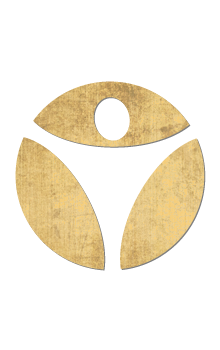Yoga For Dancers
- Updated on: January 26, 2022

As a dancer, you face unique challenges on both a physical and mental level. Dance demands focus, commitment, flexibility, strength, and grace. Every day you step into the studio, you are expected to perform at your very best. This requires a tremendous amount of discipline. While dance can bring so much joy, empowerment, and creativity, it is also a challenging and sometimes competitive artform.
As a result, yoga has become a common cross-training regimen for all types of dancers. Many dancers seek out yoga as a way to compliment their physical dance regimen, connect to their breath, build their confidence, prevent injuries, develop their discipline, and perhaps most importantly, de-stress!
In this blog we’ll explore the top 6 benefits of yoga for dancers, introduce our favorite yoga postures to enhance your dancing, prepare you for your first class, and offer at-home resources so you can begin your own yoga practice today!
Top 6 Benefits of Yoga for Dancers

Yoga offers numerous benefits to dancers. Not only will it support you in your dance practice but it will also help you outside of the studio. Yoga offers benefits for your mind, body, and spirit. Let’s explore the 6 best ways that a regular yoga practice can help to support dancers.
#1 Strength & Flexibility
Every dancer needs to stretch and you likey do it often! However, doing the same movements and stretches each day can leave your muscles bored, meaning they get used to it and your efforts stagnate your progress. Yoga offers the stretching and flexibility benefits you need as a dancer in a unique way. Yoga challenges different muscle groups and introduces a new range of motion throughout the body. You’ll learn to stretch safely while warming the body, engaging the muscles, and then stretching deeply.
#2 Breathwork
Mindful breathing is so important for dancers, but when you’re attempting challenging movements, it can be easy to forget about the breath. Yoga teaches us to breathe steadily, fluidly, and intentionally whether we hold a pose or transition between movements. Breathing with intention can help make your dancing more graceful and powerful while allowing you to improve your endurance.
#3 Self Confidence
It can be easy to become critical of yourself, your abilities, and your body as a dancer. The craft regularly requires you to be critiqued, judged, and assessed. Yoga helps dancers to physically and mentally develop their self-confidence and counter the negative messaging that often comes with dance auditions or competitions. Through your yoga practice, you’ll learn gratitude and be able to appreciate the variety of things your body does for you on a daily basis. In addition, a commitment to a regular yoga practice is a wonderful form of self-care that will help you feel a sense of pride in yourself for tending to your needs on the mat.
#4 Prevent or Reduce Injuries
Dancers often go the extra mile to achieve the perfect pose. While this dedication is admirable, it can also cause dancers to push beyond their physical boundaries and ultimately lead to injury. This competitive industry often pushes dancers to do more and be better in an effort to stay ahead and not fall behind. This means that many dancers don’t rest as much as they need to. Unfortunately, some injuries that could have been prevented with mindfulness and rest are agitated, leading to major injuries. Instead of just taking a week or two off, these injuries can push you off the dance floor for many weeks or even months of rehabilitation. Yoga can help. Yoga encourages proper body alignment so that you can learn what works for your body’s unique design and needs. In addition, it reminds us to challenge ourselves while also honoring what our body needs in that moment. We learn not to push simply for the sake of progress. Yoga encourages rest and teaches us to listen to what our body is telling us so we can keep it safe and healthy.
#5 Discipline
Discipline is a huge aspect of your dance practice. Yoga offers a different kind of discipline and structure. Instead of having tons of space to move as you please, yoga restricts you to your mat. Yoga teaches you to listen carefully and not move on autopilot. We allow the instructor to lead us through the practice without anticipating what’s coming next. Within this structure, you can develop your focus and move mindfully. These skills translate well from your yoga mat to the dance studio.
#6 De-Stress
Finally, stress relief is one of the main reasons people practice yoga. It offers practitioners the time and space to connect to themselves without distractions or obligations. Instead of a dance studio where you are being critiqued and are expected to perform, there is nothing to prove on your yoga mat. This is a time for you to unplug, sweat, move, and breathe. It is a safe space that will allow you to manage stress in a healthy, productive way.
The 3 Best Yoga Poses for Dancers

Now that you know the benefits of yoga for dancers, you’re likely wondering where to start. There are a wide variety of yoga practices that can support many needs. Restorative yoga is a gentle, low-impact style that will promote rest, ease, and wellbeing. More vigorous yoga like power flow, vinyasa, or Ashtanga yoga will offer a good physical workout as well as the mental and emotional benefits. The good news is, you don’t need to go to a studio to get started. You can begin your own yoga practice safely from the comfort and privacy of your own home. Here are three of our favorite yoga postures for dancers that will help you in and out of the dance studio.
#1 Side Plank Pose
Core strength is essential for control of your postures as a dancer. Side plank engages the full core while also firing up the obliques. At the same time you’ll challenge your upper body strength and develop balance.
How to get into Side Plank Pose:
Start in a downward dog pose. Roll onto the outer edge of your right foot and stack the left foot on top of the right. To modify you may place the edge of your left foot on the mat behind your right foot for more stability. Bring your left hand to your hip and press actively into the supporting right palm. Once you find stability, you may choose to extend your left arm up overhead, spreading the fingers wide, gaze up. Hold for several breaths. Switch sides.
#2 Tree Pose
This classic, well-known yoga posture offers so many benefits to dancers. It helps develop joint strength in the ankles, knees, and hips while helping you with your balance. Plus, you can let your creativity soar with tons of variations.
How to get into Tree Pose:
Start standing on both feet in Mountain Pose. Feel your feet press energetically into the mat as you find your center. With control, shift your weight into your right foot and bring your left foot to the ankle, inner calf, or inner thigh. Pull your navel up and in. Lengthen through the spine. Root into your standing foot and soften your shoulders. Palms may come to a prayer position at your chest or you can reach your arms up over your head. Focus your gaze forward on something still to help you balance. If you fall out, give yourself grace, and get back in when you’re ready. Hold for several breaths and then switch sides.
#3 Dancer Pose
We would be remiss to ignore the fact that there is a yoga posture called Dancer Pose! This posture offers numerous benefits to dancers including balance, stability, flexibility, and strength. This heart opener also stretches the quads and hip flexors while the backbend engages the glutes and lengthens the upper body.
How to get into Dancer Pose:
Start standing in Mountain Pose. Ground into both feet and find a focus point in front of you to settle your gaze. Bend your knee to bring your left foot to your left glute. Reach the left hand back to grasp the left foot or ankle. Use a strap if you aren’t yet able to reach your foot. Work to keep your hips square to the front of your mat (different from the hip rotation you often find in dance). Kick your foot into the hand to kick the toes up to the ceiling. Keep your heart lifted and open the front line of the body while actively reaching your right arm up. Try to keep your right arm in line with your right ear or, as a variation, you may extend it directly out from the shoulder. Begin to lower the torso forward to the floor slightly. Hold for 5-10 breaths and come out mindfully on an exhale. Switch sides.

What Dancers Should Know About Yoga

Yoga and Dance have a lot of overlaps, however there are some nuances to your yoga practice that may contradict your dance background. Here’s what you should know about yoga that may feel different from dance.
Don’t Overdo It On The Flexibility
As a dancer, you’re likely quite flexible before ever stepping onto a yoga mat. In your dance practice the focus is on achieving a certain form or pushing your abilities. In yoga, however, you can dial it back a bit. You’ll notice that when you don’t push to your fullest possible expression, you’re actually able to engage and support your flexibility with strength. This will help to prevent injury, and is especially important to keep in mind if you’re taking a heated yoga class.
Embrace Modifications
In your yoga practice you’ll be offered variations of each posture to make them more accessible to you and your body. Remember, your needs will change from day to day and each body is different. Embrace modifications instead of viewing them as a shortcoming. Also, allow yourself to skip postures, take a child’s pose, or sip some water. This is your practice and you are in control of tending to what you need in the moment.
Soften Your Abdomen
In dance we are constantly sucking in the belly. While there will be many times in yoga that you’ll want to engage the core, allow yourself to explore opportunities to let your belly go. As you inhale, notice what it feels like to let the stomach expand and fill up your lungs. Let it soften more on the exhale.
Avoid Hyperextending Your Joints
In dance, long lines and straight joints are often encouraged. But hyperextending or locking your joints, especially your knees, can cause a lot of damage and potentially injury. Allow yourself to find a microbend in your knees and elbows to reduce the strain on joints and ligaments while encouraging the support muscles to activate and fire up.
Check Your Hip Rotation
In dance, the tendency is for the hips to turn out to allow full extension of certain poses. In yoga, however, we tend to work to keep the hips square. This can be a tricky adjustment to get used to! The beauty of this is you get to engage different muscles that aren’t usually targeted in your dance practice.
How To Start Your Yoga Practice

You now have the tools and knowledge to guide you as you explore yoga and the benefits it can offer you and your dance practice. Whether you are a beginner or looking for new ways to practice yoga, we’re here to help!
If you are searching for guidance, support, and accountability we have a wide variety of on-demand yoga classes that will help you build a solid yoga foundation.
Yoga Boost is perfect for beginners. These workouts are just 20-25 minutes each so that you can get what you need and get on with your day. These impactful workouts will help you address whatever your physical needs are as a dancer. You’ll improve strength, increase flexibility, and gain peace of mind.
Yoga Edge is tailored for your dancing needs as an athlete. Short, powerful yoga practices will help you recover, restore, and rejuvenate so that you can step back into the dance studio feeling vibrant.
Finally, dancers love our Yoga Release program. We utilize yoga, self myofascial release, and foam rollers to correct muscle imbalances, improve joint range of motion, relieve muscle soreness and joint stress, improve neuromuscular efficiency, lengthen and relax your muscles, and break up adhesion. This is an excellent way to tend to sore or overused muscles while also helping you to prevent or reduce injury as a dancer.
We look forward to seeing you on your mat!
Recent Posts
Categories
Related Articles
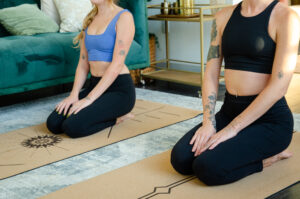
Breathing technique to improve your yoga practice
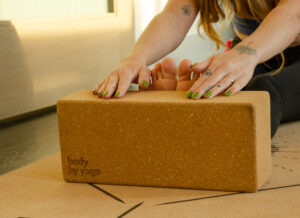
Benefits of yoga before bed
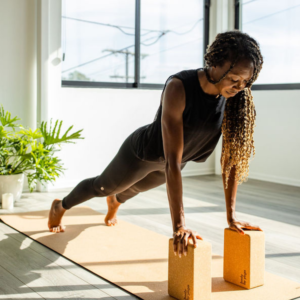
Taking the next step to more challenging yoga
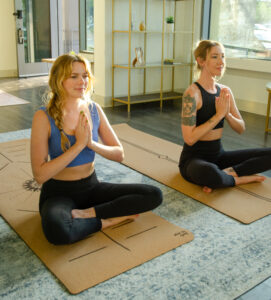
Hatha vs Power yoga
Related Articles

Breathing technique to improve your yoga practice
Your yoga practice can be whatever you need it to be. Yoga can be for energy and focus for your day, injury rehabilitation and prevention,
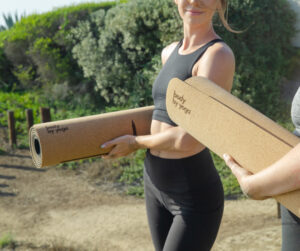
Other ways to stay involved
One of our favorite things about yoga is the community that’s behind it. We have tons of ways to be involved in our yoga community

Dynamic vs Static Stretching
Stretching is necessary in order to loosen joints, engage muscle groups, prevent injuries and help your body relax, but did you know there’s more than
